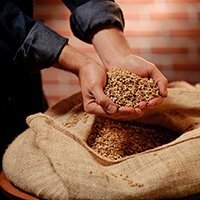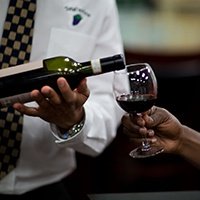Beer making and consumption in the region that is now Belgium dates back more than 2,000 years, and for the area’s early residents – the Gauls – the women of the family were the most common homebrewers. It was the Gauls who invented wooden barrels and were first to use them for beer-making and storage in lieu of pottery.
The beer the Gauls brewed was different from what we now know as Belgian beer. Elements of our modern Belgian ale began to take shape in the Middle Ages. With beer a popular beverage in monasteries, breweries were built in the abbeys, and a professional, organized level of brewing with quality standards emerged among the monks, who controlled the nascent industry.
Beer brewed by monks proved to be an enduring art, and defined a way of life. Some of the world’s most highly rated and respected beers are brewed in Trappist abbeys in Belgium to this day. Trappist ale styles such as Dubbel and Tripel are considered to be Old World classics inextricably tied to Belgium, yet they have existed less than a century, having been introduced commercially in the 1930s.
The breadth of Belgian beer styles is also attributed to Belgium’s strong historical connections to the Netherlands in the north and France to the south. The country is roughly divided into two regions: Flanders, the Dutch-speaking area to the north, and Wallonia to the south. Sour beer styles such as Flanders Red and Oud Bruin, as well as Lambic styles including Gueuze, originated in Flanders. Wallonia, which is the French-speaking region of Belgium, is where Saison ale originated in the farmhouses that dotted the land.
Trappist and Abbey-style Belgian ales, sours and saisons, along with Belgian-inspired ales from breweries in other Old World countries such as France and Italy, and New World countries including the United States and Canada, offer delicious complexity. These Belgian style beers range from mild to strong in alcohol with a character profile ranging from light and fruity, to dark and malty, to tart, sour and “barnyard.” Belgium is most renowned among American beer enthusiasts for these flavorful, complex ale styles and their rich histories.
Interestingly, in Belgium today as in most of Europe, locals most often reach for a simple pale lager as their daily beer of choice. No matter, there is a wealth of Old World Belgian brewing tradition and Belgian-inspired brews from the New World to be explored and enjoyed.
APPEARANCE
Color: Pale blonde to dark brown
Clarity: Many cloudy or hazy, some clear
Head: Fluffy, long-lasting, leaving a lace on the glass
AROMA AND TASTE
Malts: Sweet and biscuity to chocolaty and toasty in dark styles
Hops: Very mild, however can be discernable in some popular styles
Yeast: Fruity; estery notes of various light and dark tree fruits, banana. Spicy, with flavor compounds including clove in some styles.
Other: tart, sour, earthy, funky, “horsey,” leathery, “barnyard” and acetic character traits
MOUTH-FEEL
Consistency: Crisp to silky
Carbonation: Round and can be prickly, but very delicate in specific styles
Body: Light to medium-full
Finish: Long



